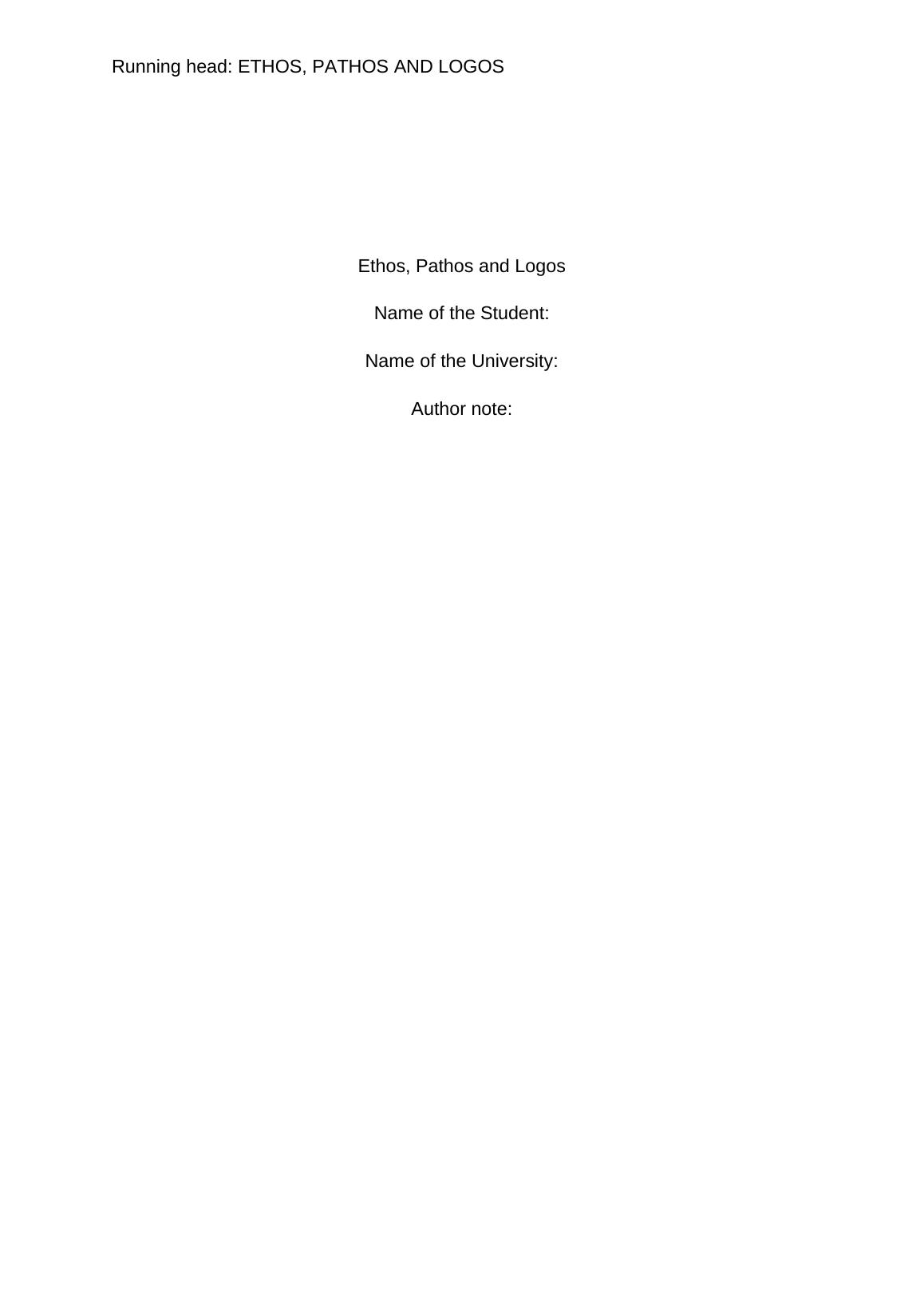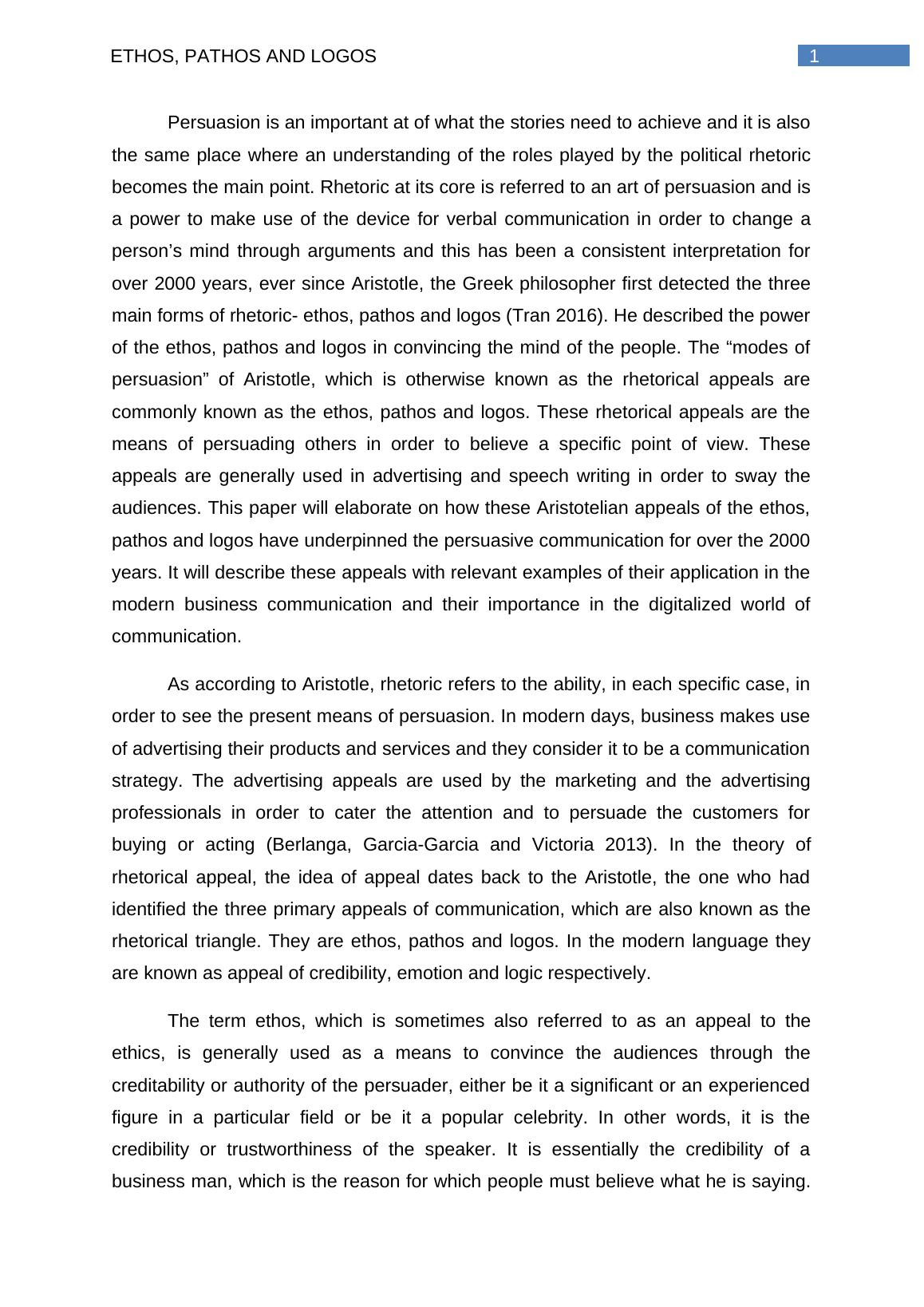(PDF) Ethos, Pathos and Logos
5 Pages1650 Words29 Views
Added on 2021-05-30
(PDF) Ethos, Pathos and Logos
Added on 2021-05-30
ShareRelated Documents
End of preview
Want to access all the pages? Upload your documents or become a member.
Ethos Pathos and Logos in Modern Business communication PDF
|5
|1508
|260
Business Communication Assignment: Academic Writing
|5
|1449
|171
Business communication and Academic Writing Skills PDF
|5
|1468
|50
Use of ethos, logos and pathos Speech 2022
|9
|2063
|11
Rhetoric in Preaching
|7
|2651
|53
BUS1003 Business Communication Essay
|6
|1571
|114


